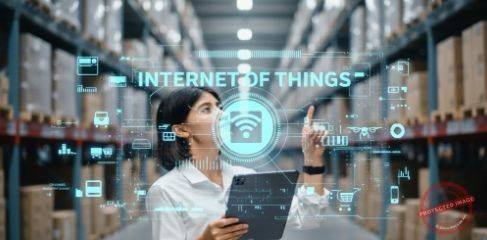How Digital Innovation, Circular Economics, and ESG Accountability Are Redefining the Future of Global Supply Networks.
Sustainability Becomes a Strategic Imperative
In today’s interconnected economy, supply chains are not just engines of commerce—they are also among the largest contributors to global emissions, waste, and resource consumption. According to the World Economic Forum, over 60% of global carbon emissions stem from supply chain activities such as manufacturing, logistics, and transportation.
As climate change intensifies and regulations tighten, sustainability has shifted from optional to essential. The modern supply chain is being reimagined as a strategic platform for environmental stewardship, powered by digital intelligence, renewable energy, and circular economy principles.
Welcome to the Green Supply Chain Revolution, where efficiency and ethics converge.
The Drivers of Sustainable Transformation
Multiple forces are driving the shift toward sustainable supply chain practices:
-
Regulatory Pressure: New frameworks such as the EU’s Carbon Border Adjustment Mechanism (CBAM) and the U.S. Inflation Reduction Act are compelling companies to measure and reduce emissions.
-
Investor Expectations: ESG (Environmental, Social, and Governance) performance now influences capital access and brand valuation.
-
Consumer Demand: Conscious consumers increasingly prefer brands that prioritize ethical sourcing and environmental responsibility.
-
Operational Efficiency: Sustainability initiatives often yield cost savings through waste reduction and resource optimization.
These converging pressures are pushing enterprises to integrate sustainability into every link of their supply networks—from sourcing to final delivery.
Digital Technologies Driving Green Supply Chains
Technology is the linchpin of modern sustainability strategies. Digital tools provide the data, transparency, and control necessary to track, measure, and improve environmental performance.
Key innovations include:
-
IoT Sensors: Monitor energy use, emissions, and environmental conditions in real time.
-
Blockchain: Creates tamper-proof records of product origins and sustainability certifications.
-
AI and Predictive Analytics: Optimize logistics routes to reduce fuel consumption and carbon footprint.
-
Digital Twins: Simulate supply chain scenarios to identify efficiency gains and waste reduction opportunities.
These technologies transform sustainability from a compliance exercise into a data-driven discipline that delivers measurable impact.
The Rise of the Circular Supply Chain
Traditional supply chains follow a linear model—produce, consume, dispose. The circular supply chain replaces this with a regenerative cycle focused on reuse, recycling, and resource recovery.
In this model:
-
Products are designed for durability, repairability, and recyclability.
-
Materials are reclaimed and reintegrated into new production cycles.
-
Waste streams become valuable inputs for secondary industries.
Leaders like Unilever, IKEA, and Schneider Electric are already pioneering circular practices that cut costs while minimizing environmental harm.
By closing the loop, companies build resilience, brand loyalty, and environmental credibility simultaneously.
Green Logistics and Carbon-Aware Transportation
Transportation remains one of the largest contributors to supply chain emissions. Digitalization and data-driven optimization are key to decarbonizing logistics.
-
AI-powered route optimization reduces empty miles and fuel usage.
-
Electric and hydrogen-powered fleets lower greenhouse gas emissions.
-
IoT-based telematics track carbon output across vehicles in real time.
-
Sustainable packaging solutions minimize material waste and improve recyclability.
Meanwhile, major logistics players like DHL and Maersk are investing in green shipping corridors and carbon-neutral delivery options, proving that sustainability and profitability can coexist.
Measuring and Reporting ESG Performance
Sustainability is only as credible as it is measurable. Organizations are turning to advanced platforms that aggregate and visualize ESG data across suppliers, production facilities, and logistics networks.
These systems provide real-time dashboards that report metrics such as energy intensity, emissions, and waste diversion rates—aligned with international standards like:
-
ISO 14001 (Environmental Management)
-
GRI Standards (Global Reporting Initiative)
-
SASB Framework (Sustainability Accounting Standards Board)
Transparency through data builds trust with regulators, investors, and customers alike, establishing accountability as a competitive differentiator.
Challenges on the Path to Sustainable Supply Chains
Despite progress, organizations face several hurdles:
-
Data Complexity: Measuring emissions across multi-tier suppliers is difficult.
-
Cost of Transition: Sustainable materials and green logistics can be initially expensive.
-
Supplier Alignment: Smaller suppliers often lack the resources to adopt sustainability practices.
-
Standardization Gaps: Inconsistent metrics complicate benchmarking.
To overcome these challenges, industry leaders are forming collaborative ecosystems—sharing data, best practices, and incentives to scale sustainability across the entire value chain.
Closing Thoughts and Looking Forward
The green transformation of supply chains is not a passing trend—it is the foundation of future commerce. Companies that invest in sustainability today are not only reducing risk but creating long-term competitive advantage.
As digital innovation, regulation, and consumer ethics continue to align, the global economy is shifting toward transparent, circular, and low-carbon value chains.
In the decade ahead, sustainability won’t be a differentiator—it will be the price of entry for global trade.
References
-
“Sustainable Supply Chains: The Next Competitive Frontier” – World Economic Forum
https://www.weforum.org/agenda/2024/06/sustainable-supply-chains-competitive-advantage -
“How Digital Technology Powers ESG Transformation” – Deloitte Insights
https://www.deloitte.com/insights/digital-technology-esg-transformation -
“Circular Supply Chains: Closing the Loop for Sustainability” – McKinsey & Company
https://www.mckinsey.com/business-functions/sustainability/our-insights/circular-supply-chains -
“Green Logistics and the Future of Freight” – MIT Center for Transportation & Logistics
https://ctl.mit.edu/research/green-logistics-future-of-freight -
“Measuring ESG Performance in Global Supply Chains” – Harvard Business Review
https://hbr.org/2024/09/measuring-esg-performance-in-global-supply-chains
Author: Serge Boudreaux – AI Hardware Technologies, Montreal, Quebec
Co-Editor: Peter Jonathan Wilcheck – Miami, Florida
Post Disclaimer
The information provided in our posts or blogs are for educational and informative purposes only. We do not guarantee the accuracy, completeness or suitability of the information. We do not provide financial or investment advice. Readers should always seek professional advice before making any financial or investment decisions based on the information provided in our content. We will not be held responsible for any losses, damages or consequences that may arise from relying on the information provided in our content.



